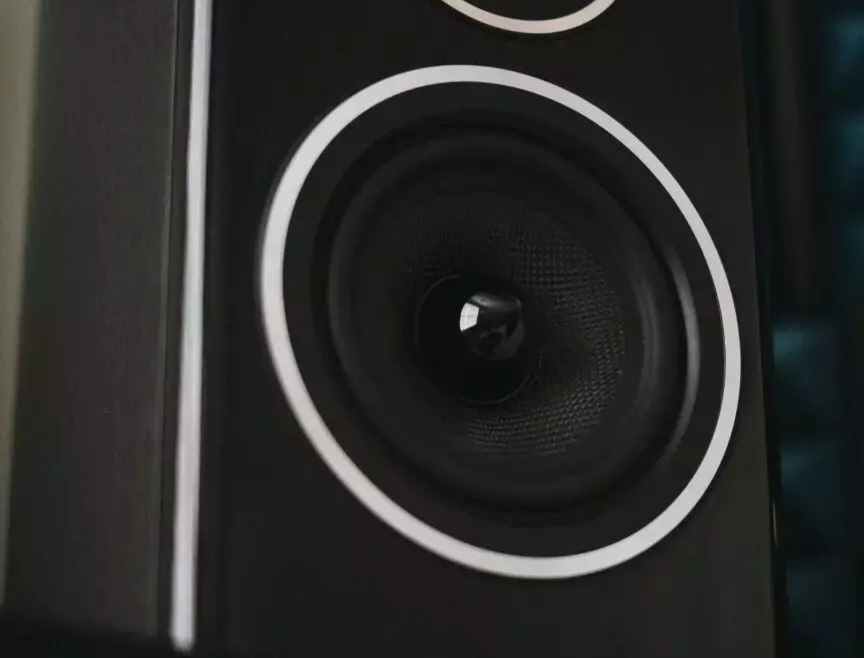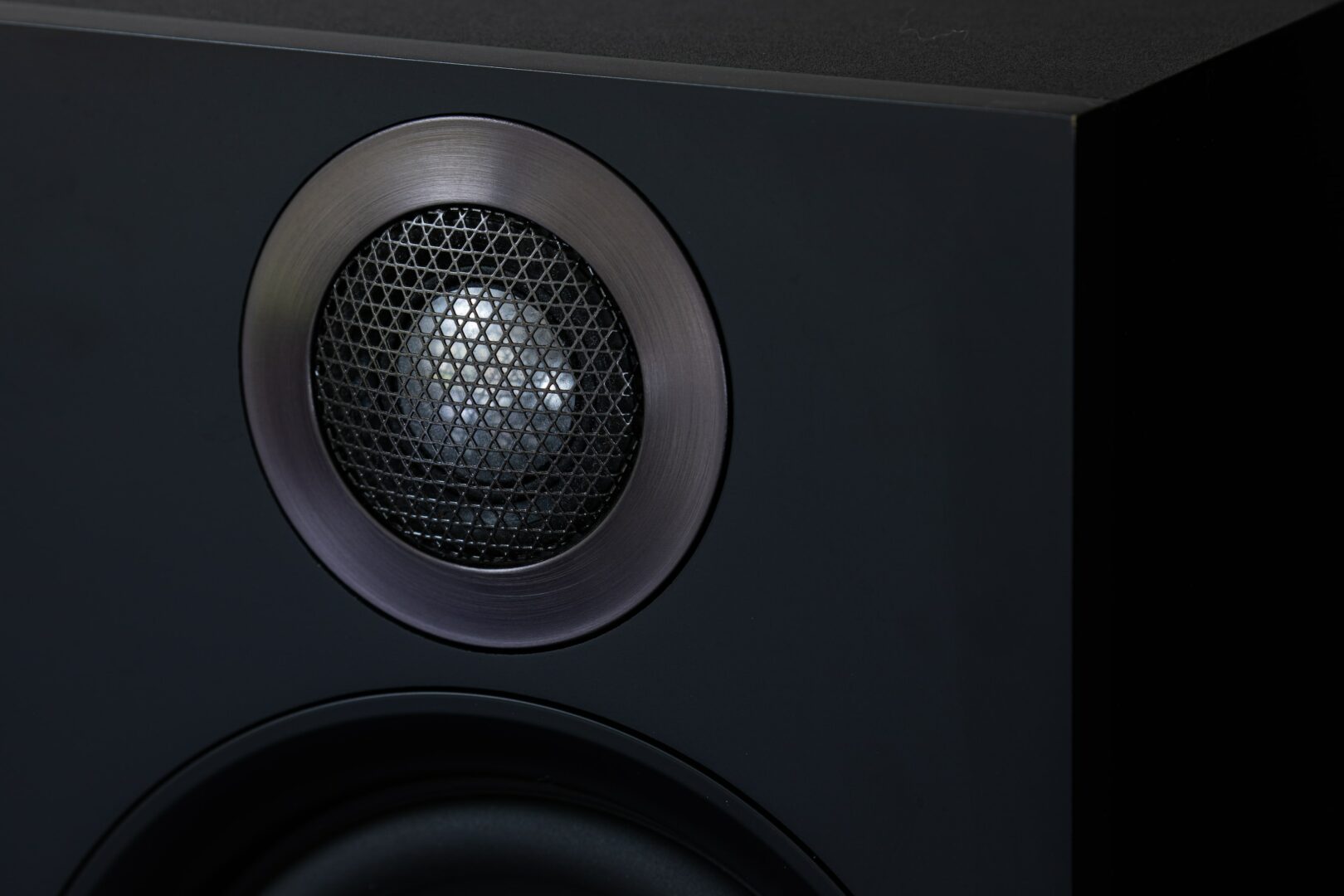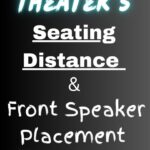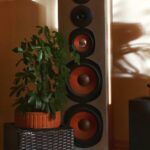The Real Difference Between Front Speakers And Surround Speakers
The Real Difference Between Front Speakers And Surround Speakers

The main differences between front speakers and surround speakers are the frequencies they handle & the positioning of their drivers. Front speakers and similarly designed surround speakers are called monopole since their drivers are forward facing. Beyond monopole, surround speakers can be further classified into bipole and dipole designs where their drivers are situated on opposite sides of the speaker.
Is there a difference between front speakers and surround speakers?
Whether you’re creating a living room home theater with tower speakers, or a smaller bookshelf speakers system for the bedroom, surround sound can add excitement to the movie watching experience.
Soundbars are definitely awesome, but the effect of surround sound when done right is just truly immersive.
But here’s food for thought — did you ever wonder if there’s actually a fundamental difference between the 2 types of speakers?
Surprisingly the answer isn’t as straightforward as you might think and there’s a really interesting story there.
The Types Of Front Speakers
Center Channel Speaker
So to understand the difference between the front and rear speakers, why not start with the most important of all the speakers in a home theater setup; the center channel speaker?
The center channel speaker sits between the left & right speaker, and has a very important job — as it’s responsible for a majority of the dialogue and other important effects that you might hear.
In fact, in some cases it can be tasked with up to 80 percent of the sound mix.
It’s this speaker that handles voices and stuff of that nature, so getting the right one when opting for a surround sound setup is really important to say the least.
It’s why whenever I’m building a system, I always start with the center channel first and then choose everything else based around it.
But then could you just use 2 stacked bookshelf speakers for a center channel speaker instead?
Well you could, but it probably wouldn’t be best.
While I’ve actually covered that very topic, long story short I found that doing so just results in all kinds of time delays and anomalies with the audio, so using a dedicated center is a much better choice.
The Klipsch R-52C and Polk Signature Elite ES35 are pretty awesome, but here’s a few additional choices that I feel are really solid in that regard too.
The Best Center Channel Speakers
Left & Right Channel Speakers
Besides the receiver, the left & right center channel speakers are the the next most important in my opinion since they’re responsible for the sound effects largely outside of dialogue that pan from the left or right side.
Any music or special effects in a particular scene that happen on screen are handled by these speakers.
Placing them correctly is especially important since placing them in the right spot in your particular room is what allows for the best imaging with your sound for that realism factor.
For example a rear ported speaker might sound better slightly further away from the wall than say a sealed one due to the way the sound waves might interact with it.
Of course the overall speaker type matters too since these along with the center is what forms the basis of your home theater setup.
These come in all shapes & sizes from bookshelf speakers to the larger floorstanding speakers, but when done right can result in something truly impressive.
The Difference Between Front Speakers And Surround Speakers

Now when it comes to surround speakers, these are the ones that are responsible for subdued noises like background music or someone talking in the background.
It’s the speakers that give surround sound that enveloping effect, hence the name.
These can vary from the standard 5 channel systems, to 7 channel systems and above.
However given that the majority of the sound mix is typically focused on the front speakers for a good portion of the time, that makes the type of surround speakers used the least important in terms of priority with getting a good sound.
The focus should be getting the front soundstage & subwoofer situated first.
But that said, they’re still really important to get right — and to understand how to do that, we first need to understand the difference between surround and front speakers.
So to start, you can actually use any front speakers for surround speakers since they’re just tuned to a higher frequency in the receiver to handle those higher frequency sounds.
There’s not actually a physical difference between the 2 types of speakers if they have forward facing drivers.
The signal is simply digitally processed differently depending on their position in the mix.
If you take a front speaker, and then decide to use it as a surround, it’ll work just fine.
Though with that said, even though there isn’t a physical difference if the driver is forward facing, there are other types of surround speakers where there is a physical difference.
Speakers where the driver and tweeter are facing forward are called monopole in design since they project the sound in one direction to wherever the listener happens to be seated.
The front speakers are monopole, and while surround speakers can also be monopole, the ones that aren’t of this design are called dipole & bipole designs because of the way they project their sound.
They can also be wall mounted or even placed on stands to hide wiring giving them a lot of flexibility in their placement.
The Types Of Surround Speakers
Bipole
Bipole speakers have 2 drivers, but the thing is they’re placed on opposite sides of the speaker itself which is pretty cool.
This is done to provide a more emissive sound — that also makes it so that the person can’t really specifically tell the exact spot where the sound is coming from if setup correctly.
This adds to that surround sound effect that makes it feel like you’re immersed in that content.
The drivers on a bipole speaker basically play at the same time by pushing air simultaneously — but to actually experience that diffuse effect, the speakers themselves have to be in a slightly different placement when compared with traditional surround speakers.
If you place them like you would normal surround speakers it might diminish the effect because they might cancel each other out with discrepancies in the actual surround sound effect.
Their specific placement though is going to depend on your seating position along with how the room itself is built since it varies.
Whether bipole speakers work better than the monopole though is subjective since it really depends too.
Dipole
Similar to bipole, dipole speakers also have 2 drivers on each side of the speaker; but where they differ is they’re not technically playing at the same time.
When one side isn’t playing, the other is, and this creates a null within an area in the room which is done to create an atmospheric effect with the surround sound.
Again though, whether this approach is better is subjective since some prefer one over the other and it depends on the actual room they’re placed in.
Can I Use Surround Speakers As Front Speakers?
Can you use surround speakers as front speakers?
Yes you can as long as the driver is forward facing or monopole in design though just be aware of the capabilities of that speaker since the front speakers are important with regard to output.
If the speaker is bipole or dipole, then you probably shouldn’t use them as front speakers since the sound might lack directionality which would take you out of the immersion
It might also make dialogue and other things hard to discern since the sound won’t be aimed towards your seating position which would make it hard to hear it.
Should Surround Speakers Be The Same As Front Speakers?

But then with all of this said, should your surround speakers be the same as your front speakers?
They can be, sure, but realistically they don’t really have to be.
Since the front 3 speakers are the most important and handle the widest ranges of frequencies, these are the ones that should be timbre matched (basically as similar as possible)
Since surround speakers don’t have to handle as much though, the need for them to be as powerful or capable isn’t really necessary.
Matching all of them could benefit audio quality slightly, but that’s dependent on a wide variety of things.
How important are rear surround speakers though?
Honestly while they do add an extra layer of immersion, I would say they’re less important than surround speakers since even less of the audio mix is directed to them.
While they can have some degree of output, it isn’t nearly as frequent as the other speakers.
Object Based Sound (Dolby Atmos & DTS:X)
Then there’s also the aspect of ceiling speakers and the newer object based surround sound or spatial audio.
Without going too in depth, object based sound is able to render each sound effect in 3D while treating each effect as an object traveling through a digital space.
This creates a much more realistic listening experience.
You’ll typically see this mentioned as Dolby Atmos or DTS:X
It’s hard to describe what it’s like in comparison to standard surround sound, but the level of realism in the audio quality is actually really impressive in my opinion.
Should Surround Speakers Be Louder Than Front Speakers?
When it comes to setup, should your surround speakers be louder than your front speakers?
Definitely not.
While most modern receivers have an optimization microphone to calibrate your speakers automatically, if you do happen to do it manually, the surround speakers shouldn’t be louder than the other speakers.
This is because their purpose is to provide ambience, not call a lot of attention to themselves — and if they’re too loud, it can detract from the overall cohesion of the sound.
As long as they’re setup properly, if they seem somewhat quiet that’s relatively normal.
The sound mix typically focuses on the other parts of the presentation in most scenes, and only really emphasize the surround channels a fraction of the time (speaking generally since there can be exceptions)
That’s not even to mention some movies can have a better mix and mastering process than others.
Of course you can adjust your surround speakers so that they’re audible enough for you to adequately listen to, but they shouldn’t be louder than the L/R & center channel speakers.
That way you enjoy the best audio quality from your home theater.
Final Thoughts
Hopefully this helped with clarifying the difference between front and surround speakers and it now makes a little more sense.
While similar if the driver is forward facing, they can also differentiate themselves further by also being bipole or dipole in design.
Which of those is better though really is dependent on what your preference is.
That’s wraps it up for this one though.
Until next time, make it easy, keep it simple.
About Me








Leave a Reply